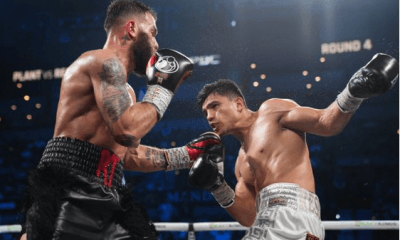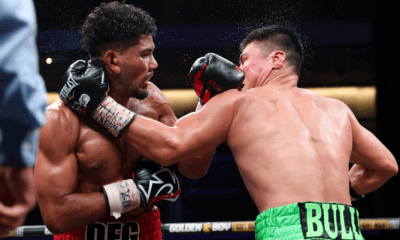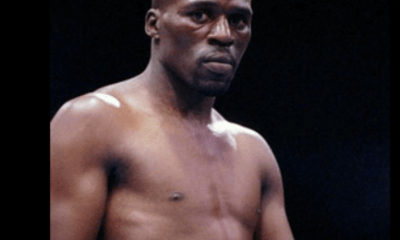Featured Articles
Scoping Out the Heavyweight Undercard in Saudi Arabia
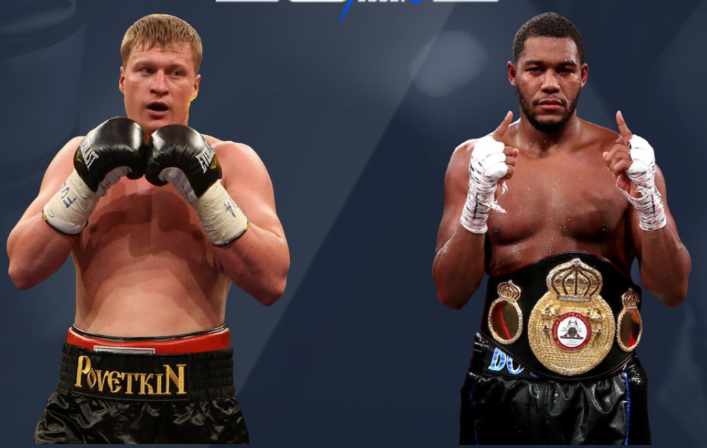
Promoter Eddie Hearn has been threatening an all-heavyweight card for some time now, and although this Saturday’s undercard to Andy Ruiz-Anthony Joshua out in Diriyah, Saudi Arabia, doesn’t quite qualify it’s unlikely he will come closer this side of a Joshua-Tyson Fury superfight.
Working back from chief support we look here at the heavyweights in action and what they bring to the mouth-watering rematch of June’s monumental shock.
First and foremost is one of ring history’s great ring survivors and arguably one of the great heavyweight contenders, Alexander Povetkin. Povetkin, 35-2, has been a player in the heavyweight division since his 2007 knockout of Chris Byrd, an astonishing stretch during which he has dueled with and dusted contenders from three different heavyweight eras over the course of more than twelve years. He was unlucky enough to share his entire prime with one Wladimir Klitschko before falling in a worthy stab at Joshua last summer and this has doomed Povetkin to failure in achieving heavyweight pre-eminence; but the moment Wladimir called time on his career, Povetkin became the de facto old-man of the division with all the ambivalence that status imparts.
The forty-year old’s latest tilt at the divisional big dogs began with a fittingly plodding but wide decision victory over Hughie Fury in August and continues in Diriyah against 18-1 former cruiserweight Michael Hunter. Hunter, who boxes out of Las Vegas, made a minor name for himself in giving pound-for-pounder Oleksandr Usyk his toughest fight back in early 2017 and cemented his place as a heavyweight gatekeeper with an impressive twelve round decision over prospect Sergey Kuzmin in September. The step up here to take on a fabled but faded contender in Povetkin is an old-fashioned and well-reasoned trajectory and maybe Hunter has got his timing right.
“[Povetkin] is ruthless and a warrior,” the American recently told Boxing Scene. “He has everything it takes to beat a guy on the come up like me. People really don’t know what I have so this is a test. This is the perfect opportunity for me.”
It is. For an older fighter without a punch the swarmer is the living nightmare in the ring. Povetkin, though, has a punch, and so for him the nightmare is of a different sort. A mobile fighter with generalship, then, is the chief tormentor. Hunter has the mobility and if he has the generalship, Povetkin could be in for a long night. There is an appealing symmetry here: Povetkin gatecrashed the heavyweight rankings by beating Byrd, a quick-footed, quick-thinking fighter who by rights should have been boxing in a lower weight division. That description is probably very close to an optimum Hunter but Povetkin has some hard years on him.
If the old man doesn’t get control of the fight early look for him to drop a narrow decision to a fighter Eddie Hearn would love to feed to one of his primed big beasts – either way expect an absorbing contest.
Before Povetkin takes to the ring, his natural successor, the Croation Filip Hrgovic, now 9-0, takes his own step up against aging American Eric Molina (now 27-5). It was once said of James “Buster” Douglas that he “lost every fight Don King ever wanted him to lose.” With the exception of a victory over an ancient Tomasz Adamek the same can be said of Molina who has obliged for several different promoters against four different money fighters. This is once again the expectation on Saturday as the 2018 Sweet Science prospect of the year hops onto an undercard stacked with fighters he may look to match next year.
“It’s a big step up for me in terms of level of opponent and also the size of the event,” Hrgovic admitted to Croatia Week of his fight with Molina. “The whole world will be watching…I’m expecting a hard fight. Eric Molina fought two times for the world title…I am expecting the hardest fight of my career.”
Maybe, maybe not. If the world is watching Hrgovic at all, it is watching to see the fighter’s limitations tested. Questions about the Croat remain unanswered: can he hold a punch from a confirmed puncher and is he available for punches only because he believes himself equal to them or is his defense a legitimate issue? Until we see him pushed against a quality opponent we can’t know.
At the moment, however, Hrgovic, like Povetkin once did, gives the impression of a serious fighter who will one day hold a strap and will also have a say in which fighters make the very top and which do not. Whether or not he himself will summit is dependent upon the answer to these questions. It’s unlikely Molina will provide these answers. Look for Hrgovic to become the fifth money fighter Eric Molina obliges in suffering a ten count.
Still with me? Good. Prior to Hrgovic’s potential emergence from the shadows is a fascinating redux in the form of Londoner Dillian Whyte (26-1). Whyte enjoyed the sympathy of almost the entire boxing world during his six-hundred day wait for a title shot while ranked as the WBC’s number one contender but that sympathy came to a juddering end when he was revealed to have failed a drug test prior to his twelve-round encounter with the dangerous Oscar Rivas. Whyte, an entertaining and engaging speaker, was suddenly silent as the bizarre machinations of the UK Anti-Doping agency were laid bare for all to see. Somehow Whyte is cleared to fight, and promoter Eddie Hearn has delivered an inconsistent and vulnerable opponent who nevertheless holds some name recognition, Mariusz Wach. Former Povetkin victim Wach, who boxes out of Poland and holds a well-padded record of 35-5 has had his own problems with steroids, testing positive after making it through twelve one-sided rounds with Wladimir Klitschko in 2012. Perhaps only in boxing could two men who have traced positive for performance enhancing drugs compete as a part of a show awash with cash in a country where homosexuality and public displays of affection are illegal.
Unfortunately, this fight may be weirdly compelling. Whyte is a confirmed puncher but Wach did twelve with Wladimir and saw the twelfth, too, with Povetkin. He is clearly slipping but there is no future for the Pole if he succumbs early but Whyte, too, has reason to impress. I’ll pick the Brit to get the job done in the first half of the contest thereby inflicting the quickest stoppage of Wach’s career in what may be his last fight.
Finally, we get to meet Magomedrasul Majidov a fighter desperately in need of a nickname but one with a serious amateur pedigree that makes him much more interesting than his 1-0 record.
Also interesting is his age: 33. Turning professional in their thirties seems more and more the norm for crack amateurs hailing from Eurasia and this Azerbaijani is no different, which makes him a man in a hurry. 6’3” and 230 he will be the smaller man in the ring against the 6’6”, 250lb British journeyman Tom Little, who has been banged out in each of his last three fights against Hrgovic, Daniel Dubois and David Price. On paper then this should be meat and potatoes for three-time world amateur superheavyweight champion Majidov, but he received a minor scare in his first professional fight against an American journeyman named Ed Fountain. Majidov defeated one Anthony Joshua in the 2011 amateur championships but punching for pay has always been a different matter and I expect Little to charge his inexperienced opponent at bell. Brief fireworks may ensue. Hopefully they will continue right up to the main event.
Check out more boxing news on video at The Boxing Channel
To comment on this story in The Fight Forum CLICK HERE
-

 Featured Articles3 weeks ago
Featured Articles3 weeks agoThomas Hauser’s Literary Notes: Johnny Greaves Tells a Sad Tale
-
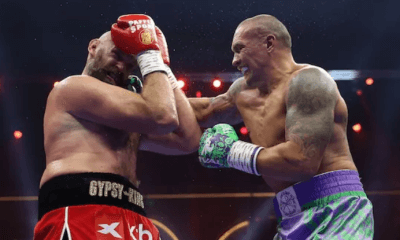
 Featured Articles2 weeks ago
Featured Articles2 weeks agoBoxing Notes and Nuggets from Thomas Hauser
-
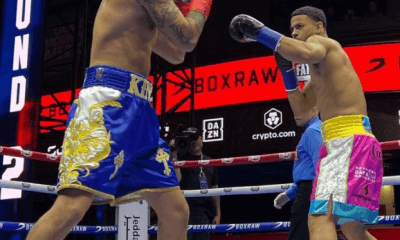
 Featured Articles4 weeks ago
Featured Articles4 weeks agoRolly Romero Upsets Ryan Garcia in the Finale of a Times Square Tripleheader
-
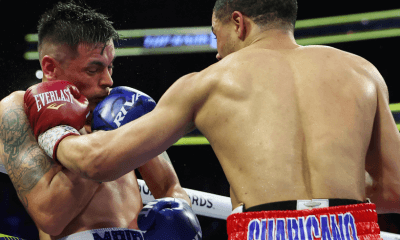
 Featured Articles4 weeks ago
Featured Articles4 weeks agoUndercard Results and Recaps from the Inoue-Cardenas Show in Las Vegas
-

 Featured Articles4 weeks ago
Featured Articles4 weeks agoCanelo Alvarez Upends Dancing Machine William Scull in Saudi Arabia
-
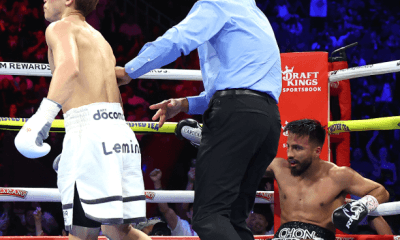
 Featured Articles4 weeks ago
Featured Articles4 weeks agoBombs Away in Las Vegas where Inoue and Espinoza Scored Smashing Triumphs
-
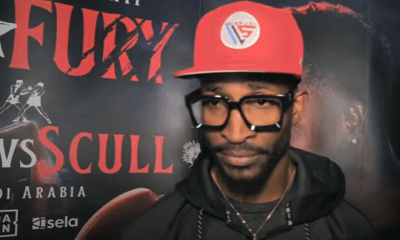
 Featured Articles4 weeks ago
Featured Articles4 weeks agoArne’s Almanac: The Good, the Bad, and the (Mostly) Ugly; a Weekend Boxing Recap and More
-
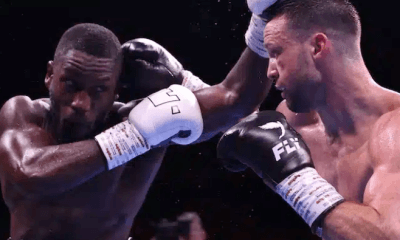
 Featured Articles1 week ago
Featured Articles1 week agoEkow Essuman Upsets Josh Taylor and Moses Itauma Blasts Out Mike Balogun in Glasgow

